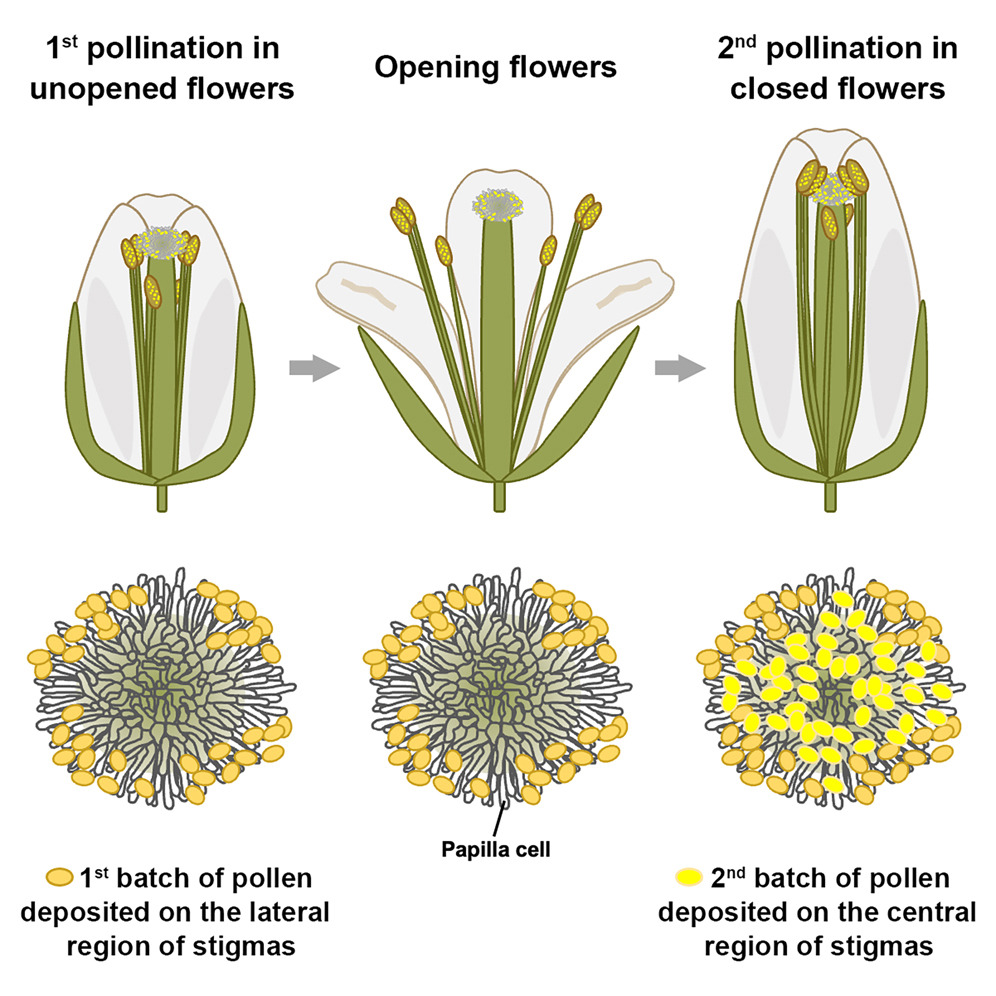Peking University, May 6, 2025: The research team led by Qu Lijia and Zhong Sheng from the School of Life Sciences and the Peking-Tsinghua Center for Life Sciences has discovered a conserved "two-step pollination" mechanism in self-pollinating Brassicaceae plants. This mechanism serves as a novel backup strategy during pollination, allowing plants to produce more seeds under pollen limitation and environmental stresses, significantly enhancing plant adaptability. The research was published in the journal Cell.
Background
Angiosperms (flowering plants) represent the largest group of land plants, largely due to their unique "pollen tube fertilization" mechanism, which eliminates dependence on water for reproduction. Successful pollination is the critical first step for seed production in angiosperms. The Brassicaceae family (e.g., Arabidopsis, cabbage, canola) often relies on self-pollination, particularly in pollinator-scarce environments.
Why It Matters
• First discovery of a "two-step self-pollination" mechanism strategy in Brassicaceae.
• This study demonstrates a backup system where flower closure and filament/pistil movements double pollen deposition.
• It enhances plant fertility under adverse conditions and offers new strategies for crop resilience. It also ensures fertility under stress (e.g., heat, drought) or pollen scarcity.
Methodology
• Live imaging was used to track pollination dynamics in Arabidopsis and other self-pollinating Brassicaceae species.
• Gamete-interaction-defective mutants (hap2/gcs1, dmp8 dmp9) were analyzed to dissect fertilization steps.
Mechanistic Insights
• First Pollination: First pollination occurs before blooming.
• Second Pollination: The second step is triggered by petal re-closure, significantly boosting pollen transfer.
Biological Significance
• First pollination secures fertilization under normal conditions.
• Second pollination ensures additional fertilization under conditions of pollen shortage or environmental stress.

Two-step pollination mechanism in self-pollinating plants of the Brassicaceae family.
Key Findings
• Two-step self-pollination maximizes fertility by providing a backup plan.
• It enhances the seed set even under environmental challenges like heat and drought.
• It sheds light on sophisticated male-female interaction mechanisms during plant fertilization.
Future Implications
• This study provides a theoretical basis for breeding stress-resilient crops by enhancing self-pollination efficiency.
• It also offers insights for manipulating plant reproductive strategies to overcome hybridization barriers.
• It advances the understanding of angiosperm fertility evolution and plant adaptation mechanisms.
*This article is featured in the "Why It Matters" series. More from this series.
Click “here” to read the paper.
Written by: Akaash Babar
Edited by: Zhang Jiang
Source: School of Life Sciences and Peking-Tsinghua Center for Life Sciences